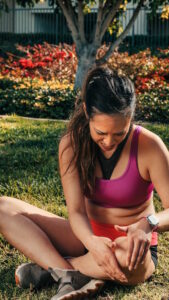
As the foremost expert on Pilates for Rehabilitation, I am thrilled to share with you the key principles that underpin this highly effective approach to recovery and wellness. Pilates is not just a form of exercise; it is a comprehensive system designed to address the body as a whole, making it ideal for rehabilitation purposes. In this guide, we will explore the fundamental principles of Pilates, its role in rehabilitation, the eight principles that form the foundation of Pilates practice, and the significance of these principles in achieving successful rehabilitation outcomes.
What are the key principles of Pilates?
Pilates is based on a set of key principles that guide the practice and ensure its effectiveness in achieving physical and mental well-being. These key principles include:
1. Breath: The breath is the foundation of Pilates. Proper breathing techniques help to oxygenate the body, engage the core muscles, and enhance body awareness during movements. The breath also promotes relaxation and focus, key elements in rehabilitation.
2. Concentration: Pilates encourages deep concentration during exercises. By staying fully present in the moment and focusing on each movement’s quality, practitioners can maximize the benefits of Pilates and avoid unnecessary strain or injuries.
3. Centering: The concept of centering refers to the activation of the body’s core muscles, often referred to as the “powerhouse.” A strong center provides stability and support for the spine and limbs, making it crucial in rehabilitation to protect and strengthen injured areas.
4. Control: Pilates emphasizes controlled and precise movements. Practitioners are encouraged to move with intention and avoid using momentum. This controlled approach allows for safe and effective rehabilitation exercises.
5. Precision: Each Pilates exercise has specific alignment and form requirements. Practitioners aim to perform movements with precision, targeting the intended muscle groups and minimizing strain on other areas of the body.
6. Flow: Pilates exercises are designed to flow seamlessly from one to another, creating a sense of continuity and grace in the practice. Smooth transitions between movements help improve coordination and promote a sense of harmony in the body.
7. Isolation: Pilates often focuses on isolating specific muscle groups to work them effectively. By isolating muscles, practitioners can target and strengthen weak areas, correcting imbalances that may contribute to injuries.
8. Routine: Consistency is key in Pilates practice. Regular and structured routines help the body adapt and progress over time, allowing individuals to see continuous improvements in their rehabilitation journey.
How does Pilates help rehabilitation?
Pilates offers a multitude of benefits that make it an excellent choice for rehabilitation purposes:
1. Core Strength and Stability: A strong core is crucial for maintaining proper posture and body alignment. Pilates’ focus on core strength helps stabilize the spine and reduces strain on injured areas.
2. Flexibility and Range of Motion: Pilates exercises involve controlled stretching, which can help restore and enhance flexibility in muscles and joints affected by injuries or surgeries.
3. Muscle Balance and Imbalance Correction: Pilates exercises target specific muscle groups, helping to correct imbalances that often occur as a result of injuries. This rebalancing promotes better body mechanics and reduces the risk of re-injury.
4. Low-Impact and Safe: Pilates is a low-impact exercise method, making it safe for individuals with joint issues, mobility limitations, or recovering from surgeries.
5. Mind-Body Connection: The mind-body connection cultivated through Pilates enhances body awareness, allowing individuals to identify and correct faulty movement patterns that may contribute to injuries.
6. Pain Management: Pilates can be effective in managing pain associated with certain injuries. By strengthening supportive muscles and improving posture, Pilates can alleviate discomfort and promote overall pain relief.
What are the 8 principles of Pilates?
The 8 key principles of Pilates are:
1. Breath
2. Concentration
3. Centering
4. Control
5. Precision
6. Flow
7. Isolation
8. Routine
These principles form the foundation of Pilates practice and are essential in achieving the full benefits of this exercise system.
Why are the Pilates principles important?
The Pilates principles are vital for several reasons:
1. Safety: The principles of control and precision ensure that movements are performed safely and with proper form, reducing the risk of injury during rehabilitation exercises.
2. Efficiency: Concentration and isolation help practitioners focus on targeted areas, making each movement more effective in addressing specific rehabilitation needs.
3. Progression: Pilates principles, such as routine and flow, allow for gradual progression in the practice, supporting individuals as they advance in their rehabilitation journey.
4. Mindfulness: Pilates encourages a strong mind-body connection, promoting mindfulness during movements, and enhancing body awareness. This heightened awareness helps in identifying and addressing physical imbalances or discomforts.
5. Core Stability: Centering and breath work together to strengthen the core, providing a stable foundation for movements and protecting injured areas during rehabilitation exercises.
6. Functionality: Pilates principles emphasize functional movements, making the exercises applicable to everyday activities and improving overall functional capacity during rehabilitation.
Summary
In summary, the key principles of Pilates for Rehabilitation form the cornerstone of this effective exercise method. Breath, concentration, centering, control, precision, flow, isolation, and routine are essential in achieving the numerous benefits of Pilates during the rehabilitation process. By incorporating these principles into the practice, individuals can enhance core strength, flexibility, muscle balance, and body awareness, supporting a successful rehabilitation journey. Pilates is a safe, low-impact, and versatile approach to recovery that promotes overall well-being and improved physical function as individuals work towards regaining their optimal health.